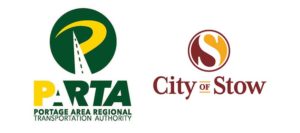What's New
New Connections on the Horizon

The Portage Area Regional Transportation Authority (PARTA) and the city of Stow are about to join a growing cast of players that are pursuing connectivity throughout the Greater Akron area. In its last virtual meeting of 2020, the AMATS Policy Committee on Dec. 17 unanimously approved two separate $40,000 grants to study livability issues in Franklin Township and the city of Stow.
AMATS offers annual grants through its Connecting Communities Program to assist in the development of plans that promote vibrant, livable communities. Over the last several years, the program has funded studies by Akron, Barberton, Boston Heights, Green, Hudson, Kent, METRO of Summit County, Montrose-area communities, Ravenna, Richfield, and Twinsburg.

Reidl
PARTA and Stow are the latest recipients of these grants. New pedestrian and cycling facilities and trail networks may be on the horizon for Franklin Township and Stow, according to AMATS Mobility Planner Heather Davis Reidl.
PARTA will use its grant to identify transit, pedestrian and bicycle improvements along state Route 59, between Horning Road and state Route 261, in Franklin Township. Due to the lack of sidewalks, crosswalks and signage, it is difficult for pedestrians who live, work, and travel this area to navigate it amongst the higher speed single-occupancy automobiles.
The PARTA study will identify areas where sidewalks could be extended, crosswalks installed, crossing signals implemented, mid-block crossing areas highlighted, and better transit passenger amenities added. This study will determine what strategies and improvements are feasible to make the roadway safer and more navigable for alternative modes of transportation such as walking and cycling.
Stow will use its grant to establish a framework for a city-wide, multi-modal trail network to accommodate all users. This network will not only serve Stow’s various populations, businesses and visitors, but will connect the city to adjacent and regional destinations and multi-modal networks.
The Stow study will explore the potential of shared-use paths and sidepaths as the primary facilities for the city’s trail network. The study will also determine the viability of placing trails within one-quarter mile of every resident and business. Among Stow’s goals is to construct its trail network over the next 20 years.
Reidl says that, despite ongoing challenges, 2020 marked a solid year of progress for the AMATS Connecting Communities Program. Agency officials were pleasantly surprised by the number and quality of grant applicants for this year’s round of funding. “We think that active transportation options such as walking and cycling are becoming more important to the public, especially in light of recent quality of life concerns,” she adds.
To learn more about the Connecting Communities Program, please click here.